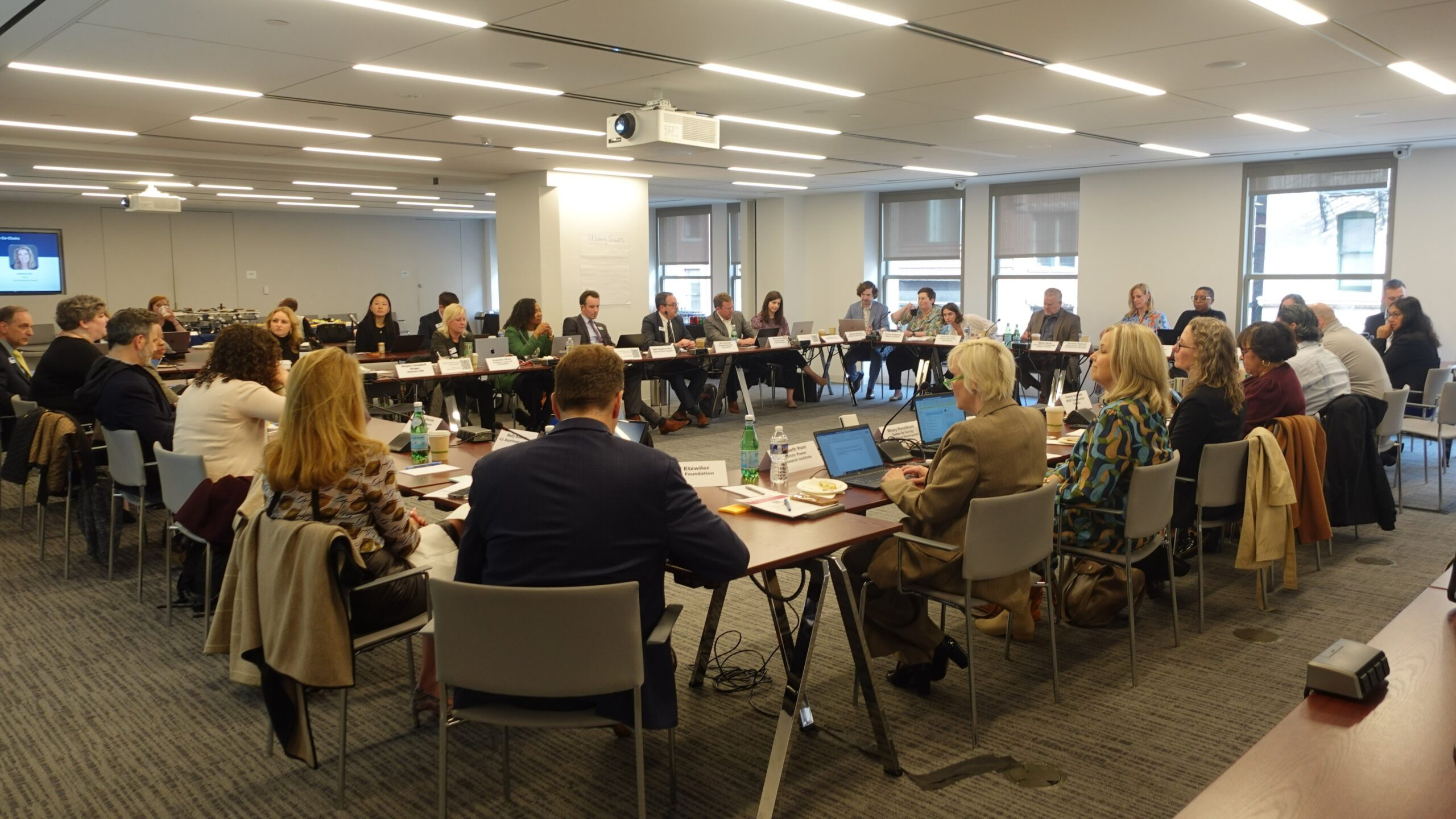3.1 Preamble
The nation’s governors are concerned about the growing challenges facing both state and federal agencies in managing and protecting our natural resources. As the United States’ diverse population rapidly expands, governors nationwide are addressing the issue of how best to use America’s land while preserving community character and protecting environmental health. Governors are also interested in working with the federal government to identify effective responses to natural disasters, while recognizing that they are uniquely situated to understand and effectively respond to these events and leverage state resources in ways that are both economically viable and environmentally sustainable.
3.2 Farm Bill Reauthorization
With passage of the 2014 Farm Bill, governors encourage Congress to return to a predictable reauthorization schedule that will provide the nation’s agriculture industry with certainty and stability. The farm bill links food, nutritional and agricultural policy for the nation. Governors are uniquely situated to influence the important relationships between farmers, consumers and other entities that support the agriculture industry.
Any new farm bill should be developed in consultation with governors and recognize the critical role that states play in implementing agricultural policy and provide states with the resources needed to implement both new and existing farm and conservation programs.
3.2.1 Principles
- Governors support innovative, voluntary programs that offer targeted incentives to address natural resources stewardship, including incentives for working lands; and federal policies should not impede state-driven conservation policies.
- All United States Department of Agriculture (USDA) conservation programs should be voluntary and incentive based programs should provide options for individuals to choose either time-limited or perpetual conservation easements. Easement programs should provide flexibility to meet local and state identified conservation goals. All programs should be coordinated and implemented through partnership among USDA, tribes, state, territorial and commonwealth governments, political subdivisions and agencies or other organizations and entities with an established history of working cooperatively with producers on agricultural lands.
- The role of states and USDA in market promotion must be clarified to ensure complementary work and reduce duplication of efforts and marketing should include high- valued and processed agricultural products.
- Congress should more clearly define its rural and economic development initiatives and goals, including more effective targeting of federal resources through greater reliance on states, increased flexibility for states in using federal programs and improved coordination between federal programs and state services.
- Stable sources of credit for rural communities need to be established.
- Congress should continue to promote and expand environmentally responsible use of farm and forest biomass for energy production.
- Congress should continue to provide protections for farmers and ranchers against risk and loss of income, investing in the security of our farm economy.
- Farming is an integral part of rural communities and those communities rural in nature. Investment in these communities is critical for the economic development of the nation.
- The farm bill should recognize and accommodate the regional differences in national farm programs, enhancing the accuracy and eligibility of farmer and rancher participation. Innovative new programs should also reflect our national diversity and further expand the linkages between farmers, consumers and the urban communities that are connected to the agricultural sector through farm bill implementation.
- Farming and ranching provides a diversity of benefits to the economy and the environment. Agriculture needs to be recognized as a strategic partner in developing resiliency and mitigating potential climate change. Practices that have potential to reduce greenhouse gasses, conserve natural resources, increase soil health, protect water quality, promote biomass use in energy and bolster sustainability should be supported
- The farm bill should provide states with the resources needed to combat invasive species, which have high negative economic and environmental impacts.
3.3 Land and Water Conservation Fund
The Land and Water Conservation Fund (LWCF), which is funded primarily by outer continental shelf mineral leasing receipts, allows federal and state governments to obtain and develop outdoor recreation areas and facilities. Current statutory language requires the federal program to receive a “minimum” of 40 percent of LWCF annual appropriations. The law is silent on the amount of funds the state-side of the program should receive.
3.3.1 Principles
- Federal revenues that are dedicated for the LWCF trust account should not be diverted for other program purposes.
- Governors support formula funding distribution methodology for distribution of state-side appropriations, as opposed to a federally-administered competitive grant program.
- Governors call on congress to provide long-term certainty and stability with LWCF stateside annual appropriations.
3.4 Secure Rural Schools and Community Self-Determination Act / Payments in Lieu of Taxes (PILT)
While governors believe that hosting federal public land has many positive effects, it also carries a significant economic impact on local governments and states. For a time, these effects were partly reconciled by the use of PILT and county payments, which were most recently delivered by the Secure Rural Schools and Community Self Determination Act. Governors urge Congress to honor long-standing commitments to public lands areas across all the states.
3.5 Federal Facilities
The nation’s federal, state and local environmental laws have been enacted to protect human health and the environment. In the same way that private-sector facilities are required to comply with these laws, federal facilities must comply with and be held to these same standards. There can be no justification for any lower standard of protection of public health and the environment from federal facilities than from any other facility. Maintaining and enhancing independent state oversight and regulation of environmental compliance at federal facilities is critical to continued success in cleaning up federal facilities and the federal government should invest efficient resources to ensure timely and effective cleanup of these sites.
3.5.1 Principles
- The U.S. Department of Energy (DOE) should continue to work with the NGA’s Federal Facilities Task Force and other stakeholders early in the development of cleanup plans.
- Governors support efforts to accelerate the cleanup of DOE sites, provided that accelerated cleanup does not result in inadequate cleanup and lax regulatory compliance, established commitments are achieved and in instances where waste will remain onsite, a long-term stewardship plan has been agreed to by state regulators.
- DOE should ensure that its programs with ongoing missions are required to budget for proper facility maintenance and decommissioning costs and discourage passing those costs along to DOE’s Environmental Management program.
- The U.S. Department of Defense (DOD) must develop comprehensive waste management programs at each of its sites that prioritize the most serious problems, long-term stewardship plans and plans for concerted and expeditious cleanup.
- Governors oppose the assertion of sovereign immunity by the U.S. Army Corps of Engineers regarding Formerly Used Defense Sites.
3.6 Wildfire Suppression and Forest Management Funding
Governors support comprehensive budgetary reforms that address immediate wildfire suppression needs and provide states with the stability needed for long-term planning and urge congress to reform the federal wildfire suppression funding formula.
- Forest health and management actives are critical to preventing catastrophic wildfires and protecting crucial watersheds.
- Disruptions to funding undermine long-term wildfire mitigation strategies and force states to assume greater risk and cost when conducting fire suppression activities.
- Efforts should be made to remedy the chronic problem of underestimating funds needed for fighting fires, so as to avoid redirecting important state general forestry program money in order to cover firefighting cost.
- Governors support the continued use and expansion of Good Neighbor Authority by both the U.S. Forest Service and the Bureau of Land Management to cooperate with states on watershed restoration and other land management services.
Time limited (effective Winter Meeting 2019 – Winter Meeting 2021). Adopted Winter Meeting 2019.












